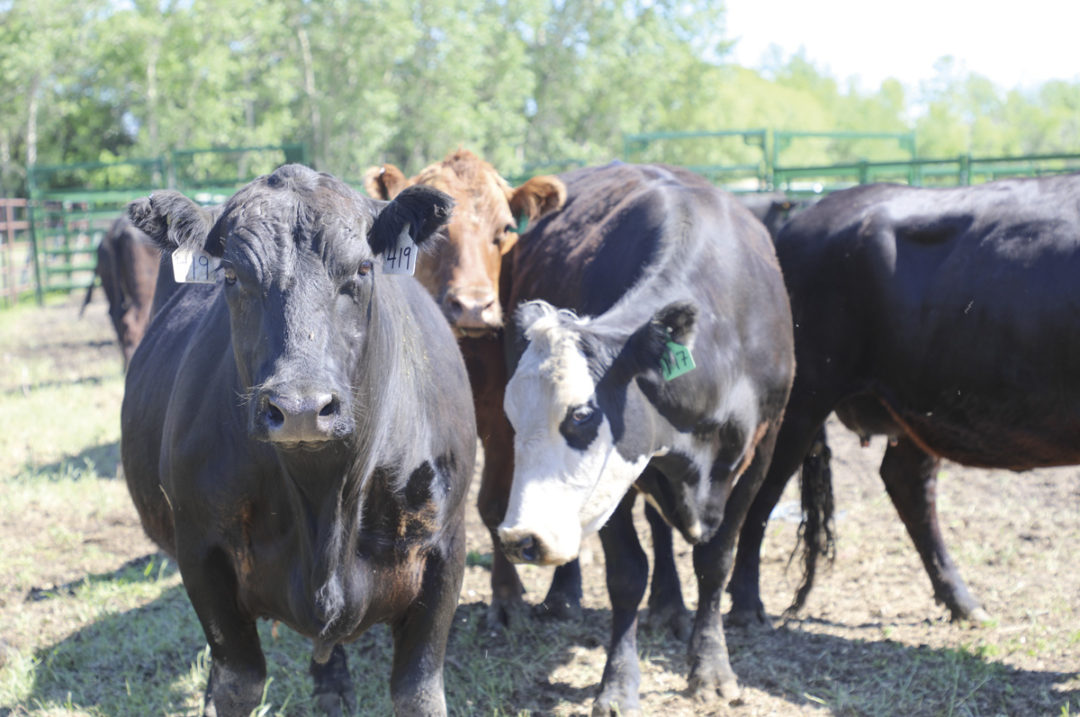Warmer months are approaching, which means a lot of ranchers will be preparing to send cattle out to pasture for unlimited green grass and acres to roam. As the temperature rises, so does the risk of heat stress. Humans and livestock alike are susceptible to it, but cattle can be particularly vulnerable, which is why learning how to combat heat stress in your cattle, especially when handling them, is an important part of livestock management.
Heat stress occurs when the body is unable to rid itself of excess heat and, without intervention, can lead to heat stroke. If cattle are unable to lower their body temperature, they may start to show signs of heat stroke, which include open-mouth breathing, a dull look in their eyes, lethargy and excessive saliva.
Cattle can reach heat stress anytime the temperature-humidity index (THI) is over 80. One important thing to know about THI is that it can easily hit 80, even in the late spring and early fall, sending cattle into heat stress. Weather patterns over the past few years show that more areas with cattle have a higher number of days with a THI of 80 or higher than they previously did.
As a rancher, it is important you know how to combat heat stress and protect cattle from serious situations. This requires extra work and vigilance during the summer months, but hard work pays off! Here are five strategies for you to help overcome heat stress in cattle.
1. Temperature matters
When it comes to cattle, the ideal temperature range for cattle is between 32ºF and 75ºF. Though we cannot control the weather, this temperature is optimal to ensure cattle maintain proper bodily functions such as digestion and milk production. Cattle cannot sufficiently recover from the previous day’s heat stress if the temperature does not drop below 70ºF at night. If the temperature remains high, your herd may experience prolonged stress, which can lead to negative impacts on health and productivity. Pay close attention to the weather daily and plan ahead so that you can take steps to help your cattle.
2. Keeping cattle cool
There are several things you can do to help cattle handle the heat. Consider decreasing the number of animals in a pen. When cattle become overcrowded, they will generate more heat which will lead to a higher risk of heat stress or worse, heat stroke. By reducing the number of animals in a pen, you are increasing room for cattle to move and dissipate heat more effectively.
Adding shade, extra water tanks, fans or sprinklers are also effective management practices. Shade can provide a cooler environment for cattle where they can rest and avoid sunlight, which reduces exposure to heat. Adding additional water sources such as sprinklers or water tanks will ensure your cattle have many resources to help avoid dehydration. Using a few of these practices at the same time will help cattle handle the heat effectively.
3. Feeding for success
Cattle produce more body heat when they are digesting food. While this can be used to your advantage in the colder months, it can change the way you feed during the summer months.
If you feed bales during the summer, livestock experts suggest feeding your herd during the evening hours. This way they’ll spend more time eating and digesting when the temperature and THI are lower, helping reduce body heat during the day.
4. The do’s and don'ts of handling in heat
Ranching never stops, and work cannot cease just because the temperatures have risen. It has been shown that temperatures are always at their worst between 10 a.m. and 4 p.m., so we suggest you avoid working cattle or doing any heavy-duty work during this time frame, as humans are also susceptible to heat stress.
If you must work cattle during hot temperatures, it is recommended you keep cattle in the handling system for no longer than 30 minutes. Keep things slow. This often means working with smaller groups of cattle at a time. The equipment you use in your cattle-handling system should also lessen the amount of stress for your cattle, which will help body temperature.
Adjustable systems and extra gates can keep the system efficient even if you’re working with smaller amounts of cattle at a time. It is also important to use low-stress cattle-handling techniques to minimize the amount of stress the cattle experience. Any equipment you use, such as your chute, should also be designed using low-stress cattle-handling techniques.
5. Timing is everything
If you find your cattle are showing signs of heat stress and are likely to overheat, you should promptly remove your cattle from the sun. Cattle suffering from heat stroke should be offered fresh, clean water, but it should be consumed in small amounts at a time. Hosing down cattle’s feet and legs with cool water or having them stand in cool water is also helpful to quickly reduce their body temperature. They can also be misted with cool water or have cool towels laid over them.
Before the summer months arrive, it’s important to prepare for the potential havoc heat can cause to your cattle. Keep these five key tips in mind for safer summer cattle handling, and plan for those hot, sunny days to achieve optimal results for you and your cattle.











